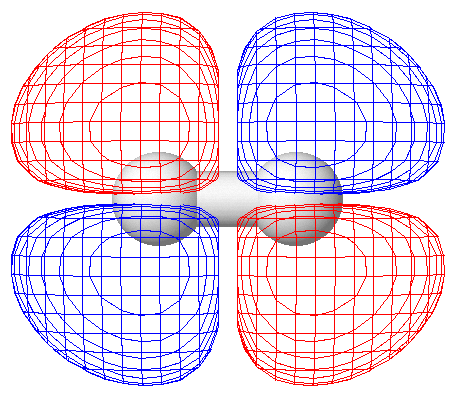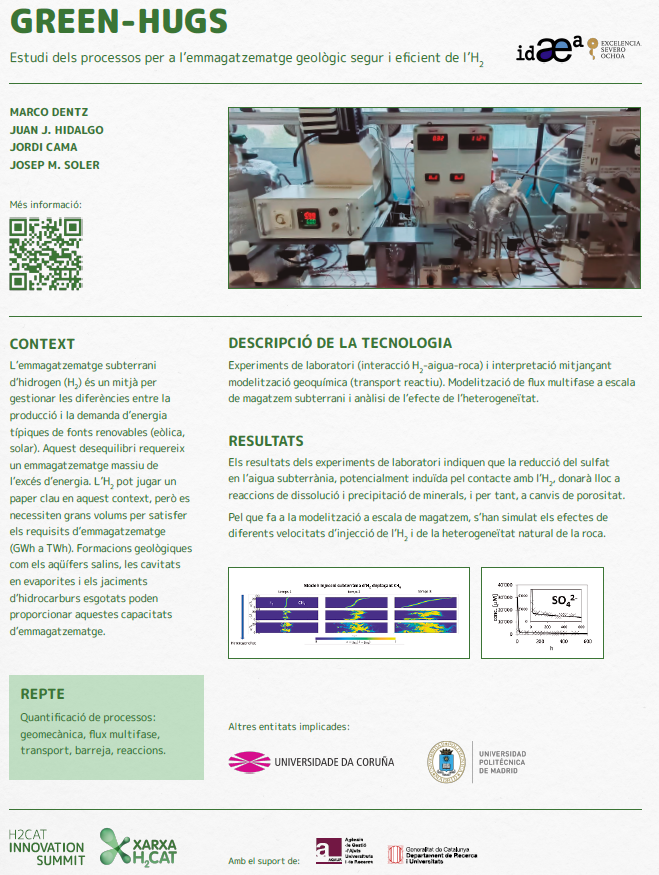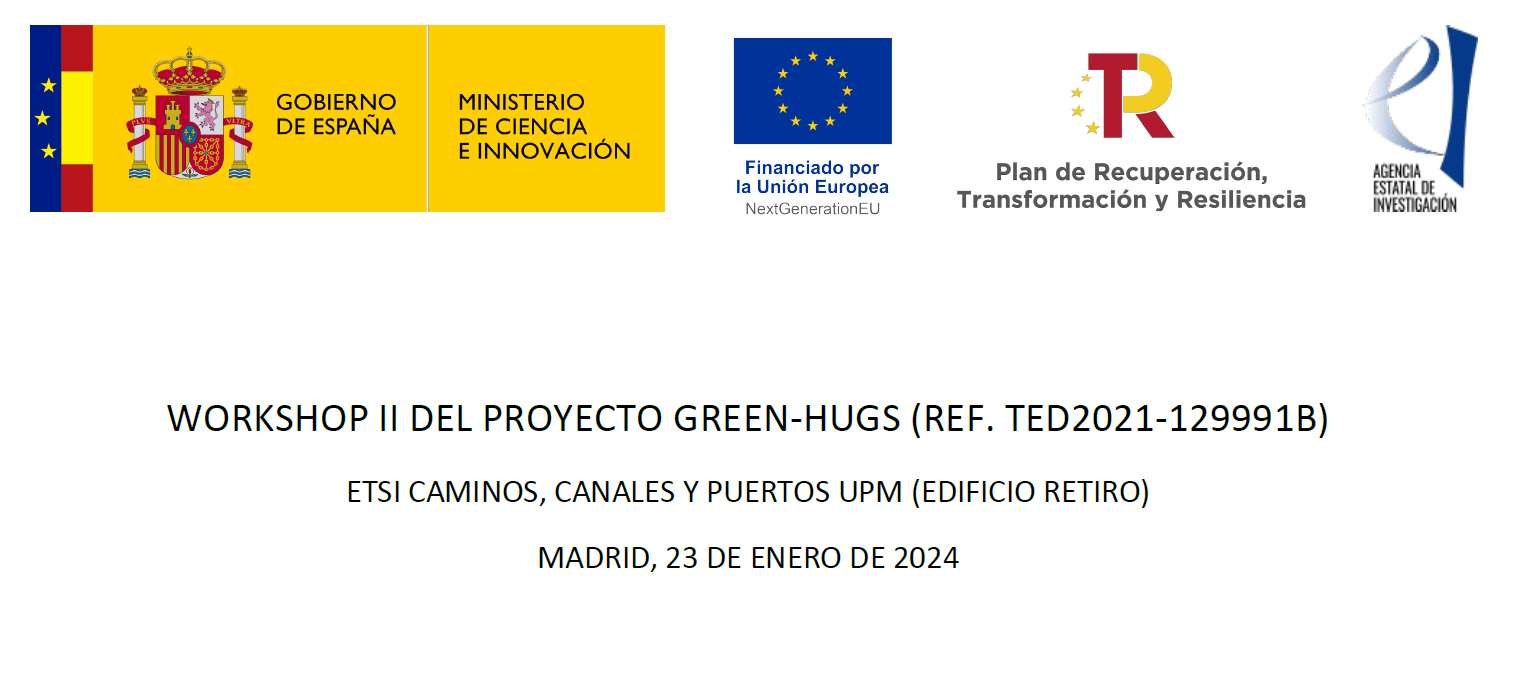About the Proyect
Green-HUGS
SP#3: Mixing and Reactions
The general objective of Green-HUGS is to advance the knowledge base for the efficient and safe geological storage of hydrogen and thus contribute to a green-hydrogen economy and the transition to a carbon-neutral society. The massive underground storage of hydrogen is a powerful means to manage the lag between energy production and demand and overcome geographical constraints, which are typical for renewable energies like wind and solar. Due to its high energy density, hydrogen production has a key role to meet the intrinsic discrepancy between intermittent energy production and demand.
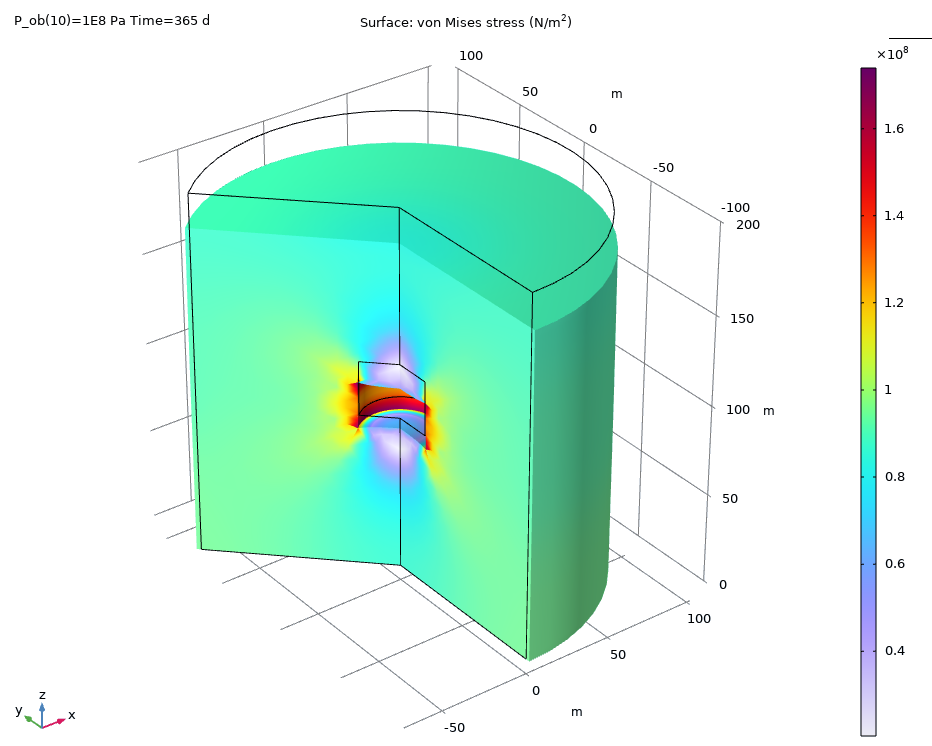
However, due to its small density, large volumes are required to meet energy storage requirements of the order of GWh to TWh, far beyond what is available in standard surface-storage facilities. Geological formations such as saline aquifers, evaporite caverns and depleted hydrocarbon reservoirs provide storage capacities in the necessary energy range, and thus can serve as grid storage, which is necessary to make a hydrogen economy feasible.
The past two decades have seen intense research on the geological storage of carbon dioxide in order to mitigate carbon dioxide emissions into the atmosphere. However, the storage aims for hydrogen and carbon dioxide and the modes of operation are radically different. Firstly, hydrogen grid storage requires periodic injection and extraction on a wide range of time scales and a high recoverability and purity, while carbon dioxide storage aims at the opposite, namely long-term storage, ideally chemically or physically bound. Secondly, physical and chemical properties of hydrogen are very different from carbon dioxide or other gases such as methane that have been stored underground.
Thus, the scientific challenges to enable underground hydrogen storage (UHS) are related to the operational requirements of hydrogen purity, recoverability, and structural integrity of the storage formations. In order to address these challenges, Green-HUGS proposes an integrated research strategy that crosses the borders between the interconnected research fields of geomechanics, multiphase flow, hydrodynamic transport and geochemistry.
In this effort, SP3 is dedicated to mixing, geochemical reaction, and upscaling. The specific objectives of SP3 are (i) to experimentally and numerically investigate the impact of hydrogen diffusion and geochemical reactions on caprock integrity and gas leakage, and (ii) to experimentally and numerically investigate and upscale the impact of mixing and chemical reactions on gas purity and chemical trapping. SP3 will pursue these objectives through a combination of laboratory experiments, which will constrain geochemical reactions and core-scale processes, detailed numerical simulations of large-scale mixing and reaction processes, and novel upscaling frameworks based on stochastic modeling and volume averaging as well as new lamellar mixing approaches.
SP3 will contribute to the coordinated effort of assessing the efficiency and safety of UHS through a sound scientific basis of the mixing and reaction processes in the reservoir and the caprock. The generated knowledge is expected to have a significant scientific and technological impact by substantially advancing the understanding and large-scale representation of complex multiphase mixing and reaction processes of hydrogen in permeable media.
The general objetive of the subproject is to study the physical processes that can alter the purity of hydrogen stored in salt caverns, saline aquifers and depleted hydrocarbon reservoirs. Especially in these last two storage systems, during the storage and withdrawal processes, other types of substances such as light hydrocarbons or brines can be carried over, affecting the quality of hydrogen and therefore its subsequent use in combustion systems or in hydrogen cells, which will affect the energy performance.
This subproject is intended to deal with the following specific objectives of the Green-HUGS project:
- To experimentally and numerically investigate the impact of hydrogen diffusion and geochemical reactions on caprock integrity and gas leakage.
- To experimentally and numerically investigate and upscale the impact of mixing and chemical reactions on gas purity and chemical trapping.
The subproject has been funded with a total budjet of 257,370.00 €.
Funding
This project is funded by the 2021 call for of the State Program to Promote Scientific-Technical Research and its Transfer, within the Recovery, Transformation and Resilience Plan.

Ministry of Science and Innovation
Spain Government
NextGenerationEU
Uropean Union
Recovery, Transformation and Resilience Plan
Spain Government
State Investigation Agency
SpainActivity and Results
- All
- Publications
- Results
- Activity
- Other
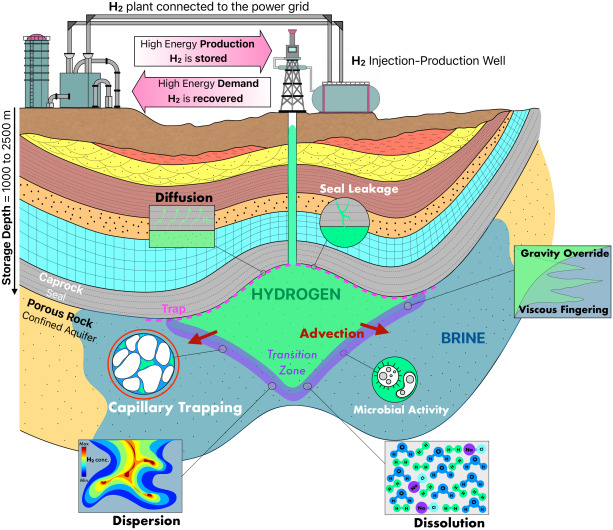
Two-dimensional numerical simulations to assess the impact of rock heterogeneity and capillary trapping on hydrogen storage in deep aquifers
Journal of Energy Storage, 129, 117170, 2025

MS030 Hydrogen Underground Storage (HUGS)
Minisimposium organized at the 9th Eropean Congress on Compuational Methods in Applied Sciences and Engineering, 3-7 of June 2024, Lisbon, Portugal
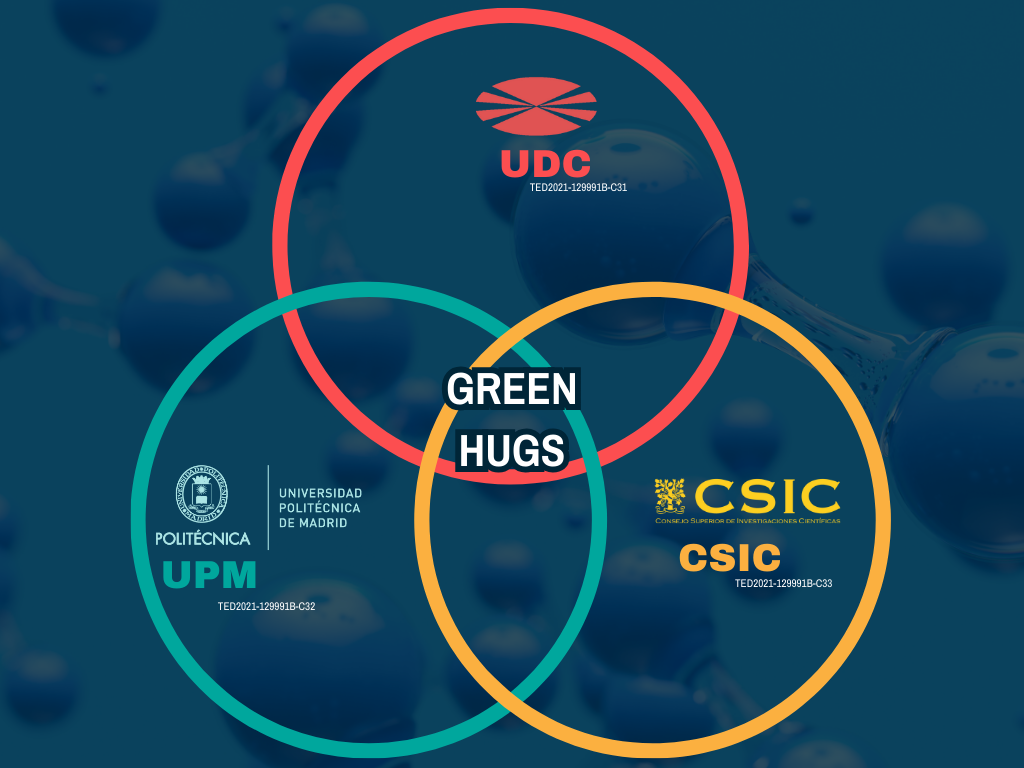
Coordination Meeting
2023/10/09
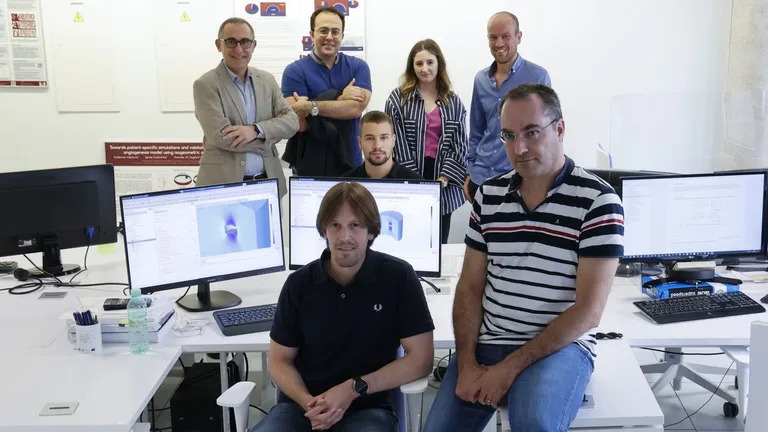
Press note on La voz de Galicia
2023/06/17

Coordination Meeting
2023/05/09

Workshop
2023/01/13

Constitution of the research consorcium
2022/11/20



